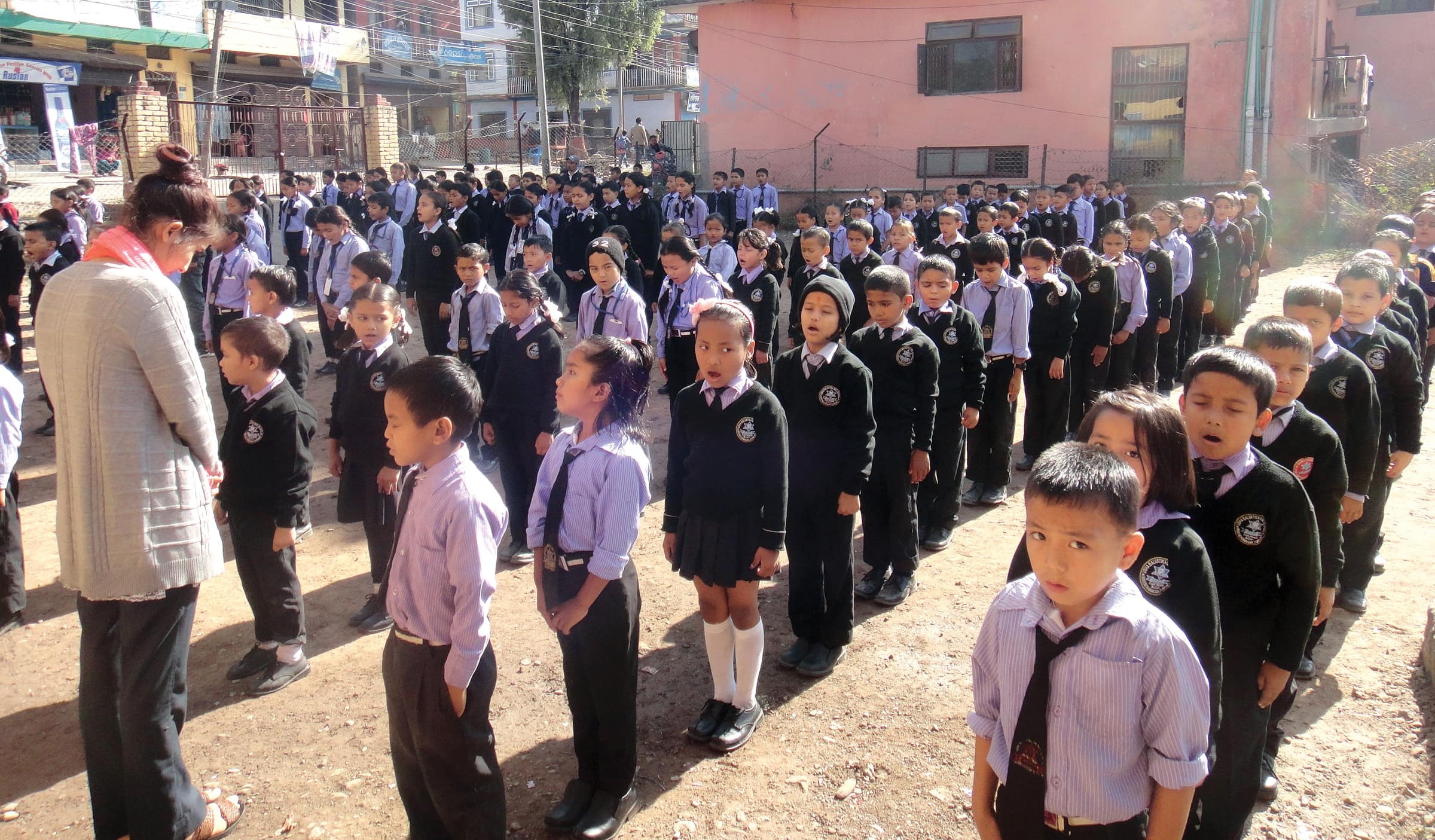There is a hugegender gap when it comes to attendance at schools. Moreover, the selective abortion of female fetuses has contributed to a widening imbalance in the sex ratio.
-Laxmi Bhandari : Centre for Investigative Journalism-Nepal
The realization that there were fewer girls in the morning assembly, in comparison to the boys, dismayed Madhu BC, a teacher at Usha Boarding School in Birendranagar. In fact, the girl’s lines were comparatively shorter than the boys’.
Upon sharing this piece of evidence hastily with one of her colleagues, she got this response: “Indeed, girls’ lines used to be quite long during our time.” Out of the total 234 new students enrolled in Nursery in the new academic session ather school, the number of girls stood at 101.
Paramananda Regmi, a teacher at St. Mary’s Boarding School in Birendranagar, too, is familiar with the declining number of girl students athis school. For instance, out of the 260 new students enrolled in grade Nursery in this academic session, only 113 are girls, while 147 are boys. Reports have suggested that when it comes to choosingbetween a daughter and a son for enrollment to a private school, parents generally pick the son. Parents send their daughters to government schools.
The same is true forother schools. For instance, out of the 91 students enrolled in the Dhuliyabit High School in Birendranagar last academic year, only 41 were girls. Interestingly, hospital records of new-born babies explain that baby boys surpassed the number of girls. Recordsatthe mid-western regional hospital for the last five years show 8,594 newbornswere boys and 7,222 girls. According to the Surkhet District Hospital data, out of the 32,760 newborns in the last five years, 17,508 were boys and15,252 girls. This illustrates that the proportionof boys is higher than that of girls.
Health experts saythat the tendency of abortion, mostly by affluent and educated families with access to prenatal ultrasound testing of the fetuses, has been one of the reasons for the declinein the number of girls. According to statistics at the District Education Office, Surkhet, out of the 51,593 students enrolled in the schools in Grade 1 in the last five years (fiscal years 2070/71 to 2073/74), only 25,429 were girls while 26,164 were boys.
Moreover, according to the National Census 2011, even as the population of women in Surkhet district surpassed men by 11,962, the number of girls under 14 was less by 3,321 thanboys.
The outcome of gender discrimination
Bishnu Maya Chhetri (name changed) of Gurvakot municipality gave birth to three daughters in a row while she hopedfor a baby boy all along. After her third girl (baby), the Chhetri couple made up their mind to go for fetuses test and act accordingly. After undergoing three abortions following ultra-sound tests in Nepalgunj, they finally decided to give birth to the fourth one because it was a male.
Bishnu Maya, who gave birth to a babyboy at the age of 39, said more than 15 women, who visited the Health Care Center in Nepalgunj for the test, and abortion, were her acquaintances. One among them was Sunita Hamal (name changed), who underwent three abortions in the last seven years of her marriage in the hope of a baby boy. She gave birth to a baby only after confirming that the fourth one was a boy. Meanwhile, BimalaPariyar (name changed) of Gurvakot, who has two sons, says, “Boys are breadwinners, while girls create worry.”
Meanwhile, just because Jormaya Sharma of Achham gave birth to two daughters in a row, she earned scorn from her family members. They took no care of her during her nextpregnancy. Unable to tolerate the suffering anymore, she moved to Birendranagar with her two daughters, who are currently pursuing their BBS degree.
Likewise, a mother of two daughters, Mina Poudel, 40, (name changed) of Birendranagar, has been facing constant pressure from her family and neighbors to give birth to a third baby. She says, “My family and society are putting pressure on me to deliver a third baby. They need a son.” Mina quips, “Even as I am contented with my daughters, I am under pressure to give birth to a son for the society.”
Sunita, Jormaya and Mina are mere representative characters of the Nepali society. What an ironyfor women who are content having daughters to be forced to have a son!
Despite the country’s law barringtest and abortion of fetuses after 12 weeks of pregnancy, women are compelled to abort due to the stereotypicalpatriarchal mentality, as well as religious, cultural and social beliefs.
Dr. Dambar Khadka, acting superintendent of the Mid-western Regional Hospital, says testing to identify the sex of the fetus and its abortion haveconsiderably increased in the lack of effective implementation of the law. Concurring to Dr. Khadka, representative of Child Workers’ Center in Nepal (CWIN), Sangeeta Wali, attributes this tendency to the lack of proper enforcement of the legal provisions.

Usha Boarding School in Birendranagar, Surkhet.
Meanwhile, to discourage this practice, the Birendranagar Municipality has launched an “Encourage Daughters Program” inwhich the municipality opens a bank account and deposits Rs. 1,000 to the family’s account soon aftera daughter is born. Mayor of Birendranagar Municipality, Dev Kumar Subedi says he is tryingto make Birendranagar a ‘daughter-friendly’ local unit. “Strict action will be taken against anyone pressurizing a woman for an abortion,” he said.
Missing daughters
According to Census 2011, women accounted for 52 percent of the total population. The population of women was approximately 800,000more than men’s, at a ratio of 100:94 while the total population was 26,494,504.
Associate Prof. at the Tribhuvan University Population Study Center, Dr. Keshav Adhikari says the statistical structure of demography is quite typical in Nepal. “There is a provision of reservation for women [in jobs] on the basis of their population. However, the bitter truth is that the concerned authority has not been able to concentrate on abortion cases. This imbalance has to be scrutinized.”



